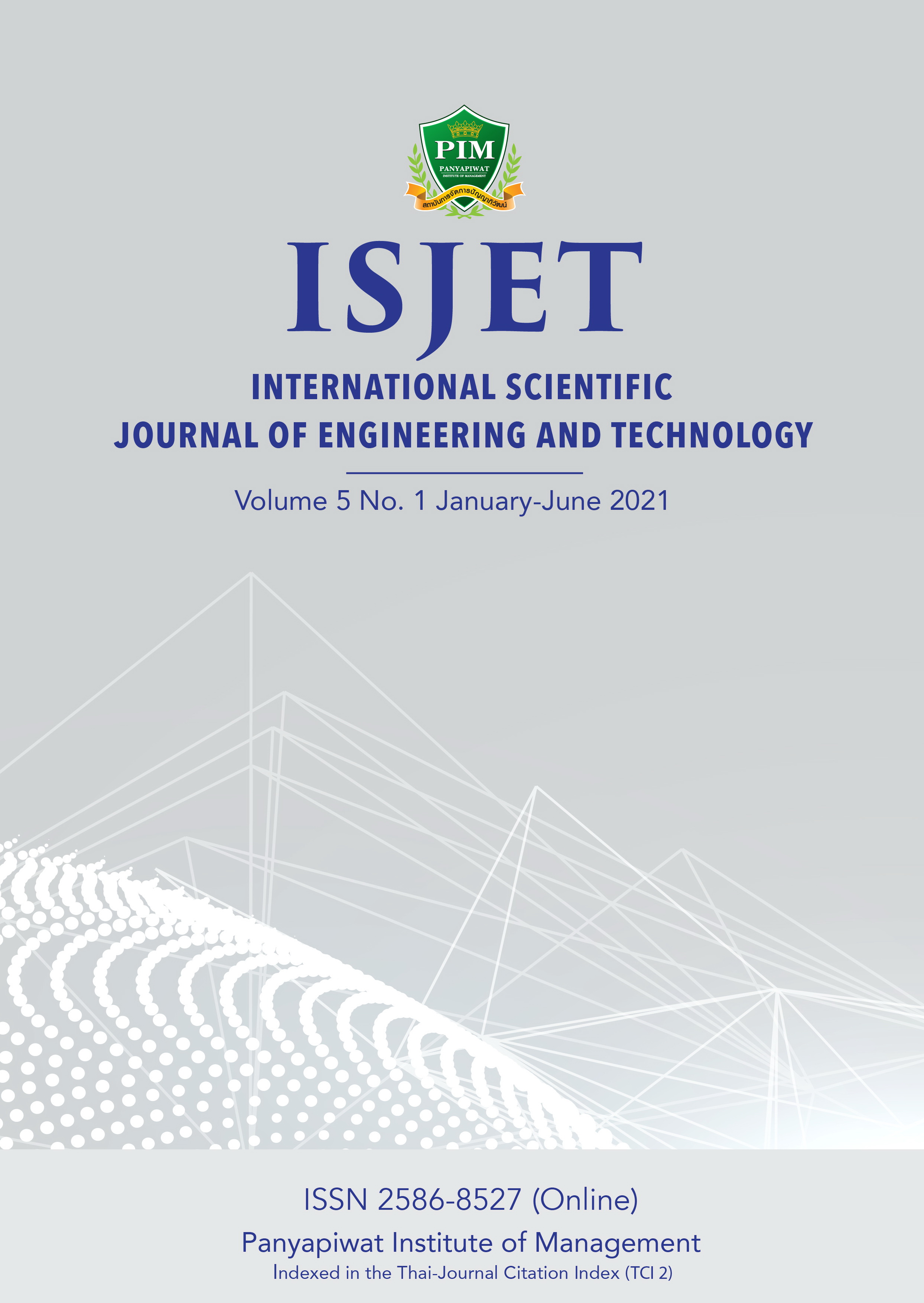Increasing Performance through Information Retrieval System for Design and Build Company
Main Article Content
Abstract
Abstract—Developing a progress report is a requirement in many types of business, including design and build the business. This is because the purpose is to provide information on the progress of the project and other necessary information, such as problems, solutions, etc., for the project owner to be aware of the status of the project. The progress report is also linked to the payment of the project budget based on the progress. However, the report preparation of project might require various information from more than one parties; thus, the process would certainly be time- consuming. Moreover, the process might be redundant and prone to error when information is extracted from one source and incorporated in other. The Objective of this research were to analyzed, design and develop the automatic document report system for Design and Build Business and to evaluate the performance of the system. In the design of this prototype system, information is automatically extracted from submitted reports prepared by various working parties and, finally, generated the progress report for the contractor to submit to project owner in an effective and efficient way. The prototype system could help reduce the process time and work load on the staff, while ensuring the correctness of the information and document.
Article Details
เนื้อหาข้อมูล
References
Design-Build Institute of America. (2021, Jan 10). What is Design-Build? [Online]. Available: https://dbia.org/wp-content/uploads/2018/05/Primers-What-is-Design-Build.pdf
Design and Build Institute of America Rocky Mountain Region. (2021, Jan 10). What is Design-Build? [Online].
Available: https://www.dbiarockymountain.org/what_is_design build.php
J. Beel and B. Gipp, “Collaborative document evaluation: An alternative approach to classic peer review,” in Proc. World
Academy of Science, Engineering and Technology, 2008, pp. 353-356.
L. Stein and D. Sharon, “Trends in automating document generation,” IEEE Software, vol. 12, no. 5, pp. 116-118, Sep. 1995.
AIMultiple. (2021, Jan 10). The Ultimate Guide to Document Automation in 2020. [Online]. Available: https://research. aimultiple.com/document-automation/#what-is-documentautomation
P. N. Lamphun and V. Wuwongse, “Inter-Governmental Collaboration Through E-Document Computation: A Case Study of Provincial Budgeting in Thailand.” International Journal of Information Communication Technologies and Human Development, vol. 4, no. 1, pp. 1-23, Jan. 2012.
A. Celentano, M. Grazia Fugini, and S. Pozzi, “Knowledge-based document retrieval in office environments: the Kabiria system,” ACM Transactions on Information Systems (TOIS), vol. 13, no. 3, pp. 237-268, Jul.1995.
G. Amato, G. Mainetto, and P. Savino, “An Approach to a Content-Based Retrieval of Multimedia Data,” Multimedia Tools and Applications, vol. 23, no. 4, pp. 9-36, Jul. 1998.
R. Lankester, “Implementing Document Automation: Benefits and Considerations for the Knowledge Professional,” Legal Information Management; Cambridge, vol. 18, no. 2, pp. 93-97, Jun. 2018.
G. L. Klein and L. Adelman, “A Collaboration Evaluation on Intelligence Analysis, McLean, Virginia, 2005, pp.1-6.
P. Preelakha, P. Na Lamphun, and J. Qu, “An Effect ofkhaluangGamification on Education under Online Lives Teaching. (2020, Jul.-Dec.). International Scientific Journal of Engineering and Technology [Online]. 4(2), pp. 20-Available: https://ph02.tci-thaijo.org/index.php/isjet/article/view/241736/164589


